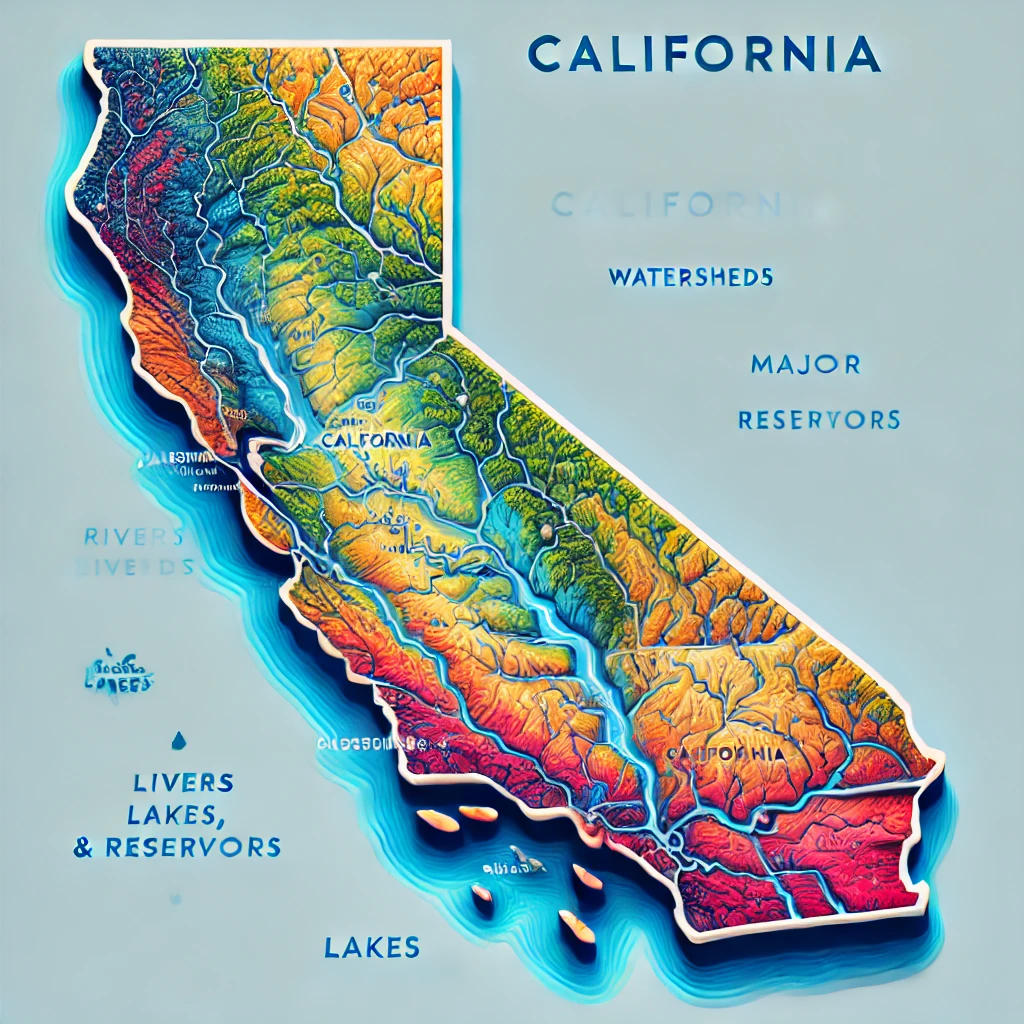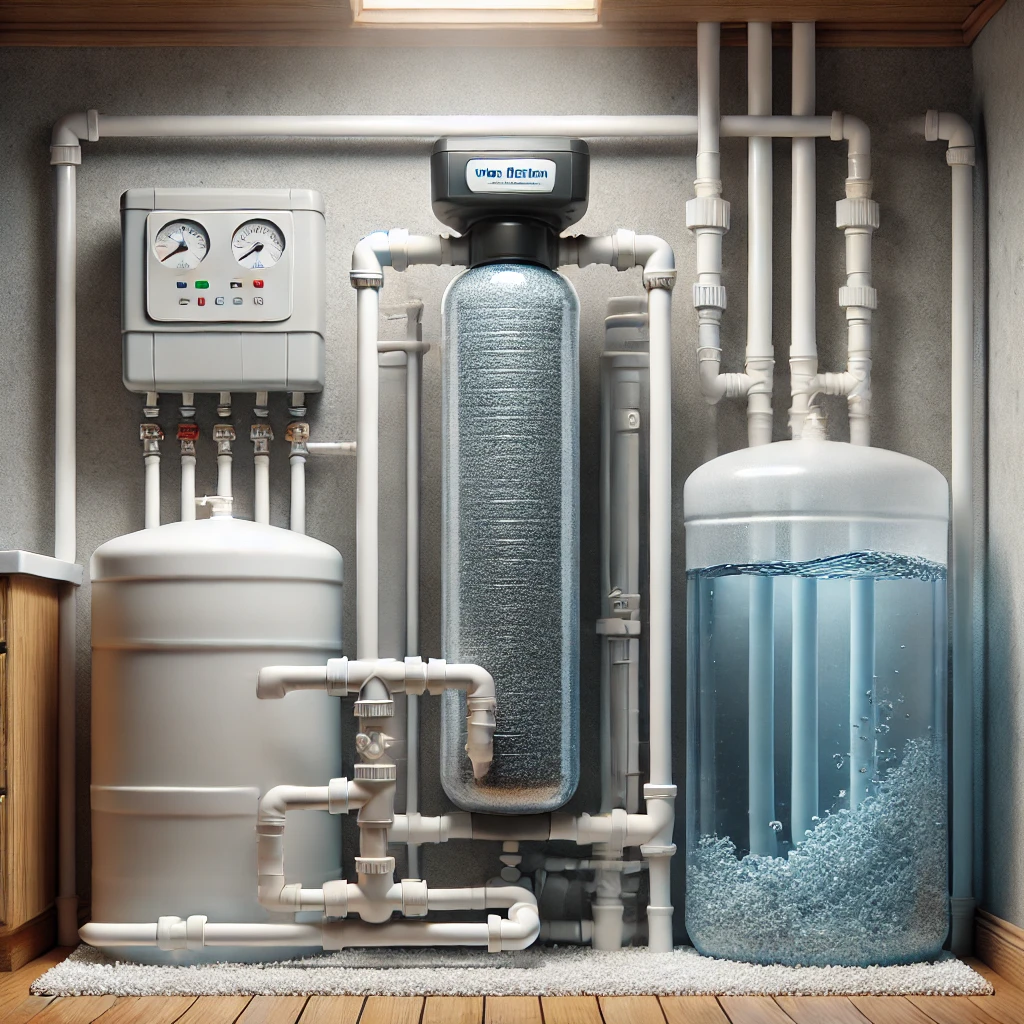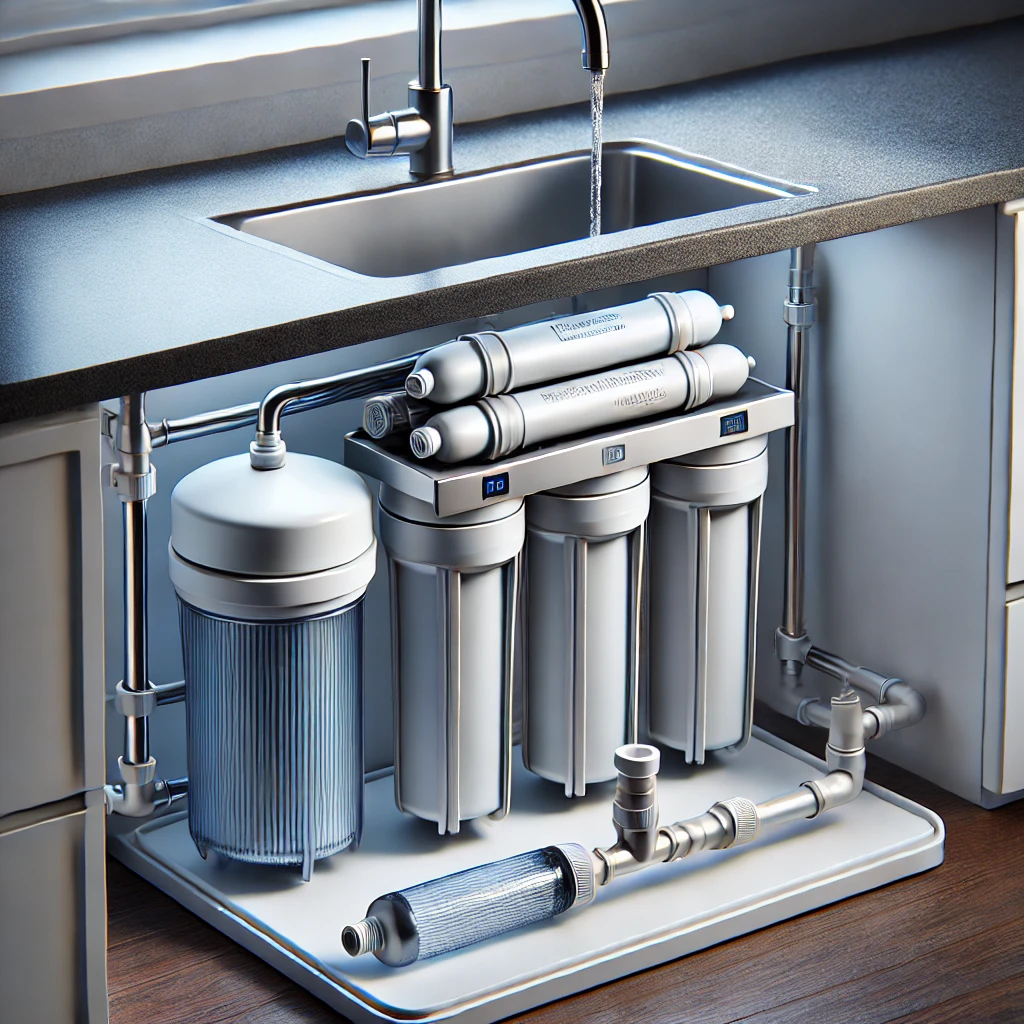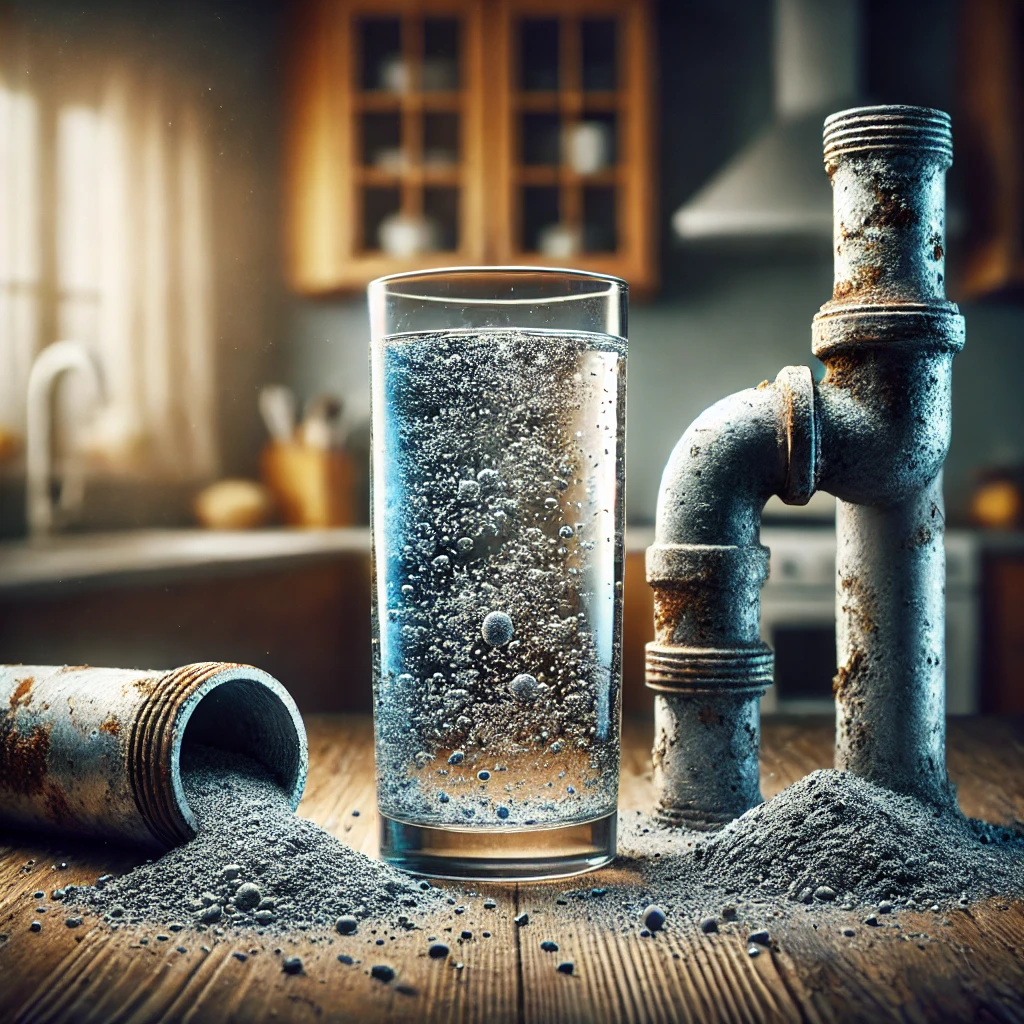Comprehensive Guide to Water Quality in California: Contaminants, Issues, and Water Filtration Solutions
by Ryan Moreau / updated February 3rd, 2025
California faces a myriad of water quality challenges that impact millions of residents and ecosystems. From agricultural runoff in the Central Valley to industrial pollutants in urban centers like Los Angeles and San Francisco, understanding the intricacies of California's water quality is essential for ensuring safe and clean water for all. In this comprehensive guide, we will explore the common contaminants found in California's water sources, regional water quality issues, and effective filtration solutions to protect your household. Before diving into our guide check out our Water Quality Tool by simply entering your zip code to analyze your local water and recieve customized water filtration system recommendations.

Overview of California's Water Sources
California's water supply is a complex network sourced from rivers, lakes, and groundwater. The state's major water sources include:
- Sacramento-San Joaquin River Delta: A key water distribution hub connecting northern and southern California.
- Central Valley Aquifer: A crucial groundwater source that supports extensive agricultural activities.
- Colorado River: Supplies water to southern California through the Colorado River Aqueduct.
- California Aqueduct: Transports water from the northern part of the state to the populous southern regions.
- Local Reservoirs and Lakes: Serve both municipal and recreational purposes across the state, including Lake Tahoe and Shasta Lake.
- Desalination Plants: Coastal regions rely on desalination to supplement freshwater supplies.
With such a vast and varied water infrastructure, maintaining water quality across California is a monumental task that requires constant monitoring and advanced treatment solutions.
Common Water Quality Contaminants in California
California's water sources are susceptible to a range of contaminants, each posing unique challenges to public health and the environment. To better understand the specific contaminants affecting your area, utilize our Water Quality Tool before exploring the following common water quality contaminants:
1. Per- and Polyfluoroalkyl Substances (PFAs)
PFAs contamination arises from industrial discharges, firefighting foams, and consumer products. These persistent chemicals can accumulate in the human body, leading to adverse health effects such as hormonal disruptions, immune system impairment, and increased cancer risks. For more information on PFAs, visit the EPA PFAs Tools and our PFAs Contamination Guide.
Water Filtration Options for PFAs: Reverse Osmosis Water Filters, Activated Carbon Water Filters
2. Nitrates
High nitrate levels are primarily attributed to agricultural runoff from fertilizers used in California's vast farming areas, especially in the Central Valley. Elevated nitrates in drinking water can cause serious health problems, especially for infants, leading to conditions like methemoglobinemia or "blue baby syndrome."
Water Filtration Options for Nitrates: Reverse Osmosis Water Filters
3. Arsenic
Arsenic is a naturally occurring element found in groundwater, particularly in regions like the Central Valley and parts of Northern California. Long-term exposure to arsenic-contaminated water can lead to various health issues, including skin lesions, cardiovascular diseases, and an increased risk of cancer.
Water Filtration Options for Arsenic: Reverse Osmosis Water Filters
4. Chlorine and Disinfection Byproducts
Chlorine is commonly used to disinfect water supplies, but it can react with natural organic matter to form disinfection byproducts like trihalomethanes (THMs). Prolonged exposure to these byproducts is linked to an increased risk of cancer and reproductive issues.
Water Filtration Options for Chlorine and Disinfection Byproducts: Activated Carbon Water Filters, Reverse Osmosis Water Filters
5. Heavy Metals (Lead and Copper)
Older infrastructure in cities like Los Angeles and San Francisco often contains lead and copper pipes, leading to contamination through corrosion. Elevated levels of these metals in water can cause neurological and developmental problems, particularly in children.
Water Filtration Options for Heavy Metals (Lead and Copper): Reverse Osmosis Water Filters, Activated Carbon Water Filters
6. Selenium
Selenium is a naturally occurring element that can enter water supplies through agricultural runoff and industrial discharges. High selenium levels can be toxic to aquatic life and pose health risks to humans, including skin rashes and respiratory issues.
Water Filtration Options for Selenium: Reverse Osmosis Water Filters
7. Mercury
Mercury contamination primarily results from industrial activities and improper waste disposal. Mercury in water can accumulate in fish, posing serious health risks to humans who consume contaminated seafood, including neurological and developmental impairments.
Water Filtration Options for Mercury: Activated Carbon Water Filters, Reverse Osmosis Water Filters
8. Volatile Organic Compounds (VOCs)
VOCs such as benzene, toluene, and xylene are common industrial pollutants that can contaminate water supplies through spills, leaks, and improper disposal of chemicals. Exposure to VOCs can lead to liver and kidney damage, as well as increased cancer risks.
Water Filtration Options for VOCs: Activated Carbon Water Filters
9. Pharmaceuticals and Personal Care Products (PPCPs)
Pharmaceuticals and personal care products enter water supplies through human excretion and improper disposal of medications. These substances can disrupt endocrine systems and contribute to antibiotic resistance in aquatic organisms.
Water Filtration Options for PPCPs: Reverse Osmosis Water Filters
10. Pesticides and Herbicides
Agricultural activities in California contribute to the presence of pesticides and herbicides in water sources. Long-term exposure to these chemicals can lead to various health issues, including cancer, reproductive problems, and neurological disorders.
Water Filtration Options for Pesticides and Herbicides: Reverse Osmosis Water Filters, Activated Carbon Water Filters
11. Fluoride
Fluoride is often added to municipal water supplies to prevent tooth decay, but excessive levels can lead to skeletal fluorosis and other health issues. Natural sources can also contribute to high fluoride levels in groundwater.
Water Filtration Options for Fluoride: Reverse Osmosis Water Filters
12. Trichloroethylene (TCE)
TCE is a volatile organic compound used primarily as an industrial solvent. It can contaminate water supplies through industrial spills and leaks. Long-term exposure to TCE is associated with liver and kidney cancer, as well as developmental issues in children.
Water Filtration Options for Trichloroethylene (TCE): Activated Carbon Water Filters
13. Perchlorate
Perchlorate is a chemical used in rocket propellant, explosives, and fireworks. It can contaminate water supplies through industrial waste and runoff. Perchlorate exposure can disrupt thyroid function, leading to developmental delays and other health issues.
Water Filtration Options for Perchlorate: Reverse Osmosis Water Filters
14. Bromate
Bromate is a byproduct formed when ozone is used to disinfect water. It is a potential carcinogen and can cause reproductive harm. Managing bromate levels is crucial for maintaining safe drinking water standards.
Water Filtration Options for Bromate: Reverse Osmosis Water Filters
General Water Characteristics in California
Beyond specific contaminants, California's diverse geography contributes to varying general water characteristics across the state. Understanding these characteristics is essential for selecting the appropriate water treatment solutions to ensure the longevity of your plumbing and the quality of your water supply.
1. Water Hardness
Water hardness, caused by high concentrations of calcium and magnesium ions, varies significantly across California:
- Southern California: Known for its hard water, especially in areas like Los Angeles and San Diego. The region's limestone-rich geology contributes to elevated levels of calcium and magnesium in the water supply.
- Central Valley: Agricultural areas often experience hard water due to groundwater sources rich in minerals from natural deposits.
- Northern California: While some areas have softer water, others, particularly those relying on groundwater, can exhibit moderate hardness levels.
Hard water can lead to scale buildup in pipes and appliances, reducing their efficiency and lifespan. It also affects soap lathering, leaving residues on dishes and skin.
To combat water hardness, water softeners are highly effective. These systems replace calcium and magnesium ions with sodium or potassium ions, effectively softening the water and preventing scale formation.

2. Corrosive Water Conditions
Corrosive water, characterized by water that generally has lower pH, hardness, alkalnity levels and high chloride concentrations, poses significant challenges in certain regions:
- San Francisco Bay Area: The region's older infrastructure, combined with water sources that can be slightly acidic, makes the water more susceptible to leaching heavy metals such as lead.
- Coastal Areas: High chloride levels, especially in coastal groundwater sources, increase water corrosiveness, accelerating pipe degradation.
- Some Inland Areas: Regions relying on specific groundwater sources may experience varying degrees of water corrosiveness based on local geology.
Corrosive water can cause pipe deterioration, leading to the release of harmful metals into the water supply and necessitating frequent plumbing repairs.
Acid neutralizer filtration systems can mitigate the effects of corrosive water. These systems increase the water's pH level to prevent corrosion of household plumbing.
Regional Water Quality Challenges in California
California's diverse geography and climate contribute to varied regional water quality issues. Key challenges include (EPA Source):
1. Central Valley: Agricultural Runoff
The Central Valley, a major agricultural hub, faces significant nitrate and pesticide contamination from extensive fertilizer and pesticide use. This runoff not only affects groundwater quality but also impacts surface water bodies, posing risks to both human health and aquatic ecosystems. According to the EPA, agricultural runoff is one of the leading causes of water quality degradation in the region.
2. Los Angeles Basin: Industrial Pollutants
Urban centers like Los Angeles contend with industrial pollutants, including PFAs, heavy metals, and volatile organic compounds (VOCs). The high density of industries increases the likelihood of accidental discharges and ongoing emissions, complicating efforts to maintain safe water standards. The EPA highlights that industrial activities are a major source of contamination in the Los Angeles Basin.
3. San Francisco Bay Area: Aging Infrastructure
The San Francisco Bay Area's older water infrastructure is prone to lead and copper leaching. Efforts to replace aging pipes are ongoing, but in the meantime, residents are advised to use filtration systems to mitigate exposure to these harmful metals. The EPA notes that aging infrastructure is a significant challenge in maintaining water quality in urban areas
4. Southern California: Drought and Water Scarcity
.Prolonged drought conditions exacerbate water scarcity, leading to increased reliance on groundwater sources that are more susceptible to contamination. Managing water resources sustainably while ensuring quality is a critical concern in this region. The EPA emphasizes that drought intensifies existing water quality challenges by reducing water availability and increasing pollutant concentrations.
5. Northern California: PFAs and Mercury Contamination
Northern California has reported elevated levels of PFAs in both groundwater and surface water, primarily due to industrial activities and the use of firefighting foams. Additionally, mercury contamination from historical mining operations poses significant environmental and health risks. The EPA identifies industrial legacy and ongoing discharges as key contributors to PFAs and mercury pollution in this region.
Utilizing the Water Quality Tool for California Residents
Understanding your local water quality is the first step toward ensuring safe and clean water for your household. Our Water Quality Tool allows California residents to enter their zip code and receive a detailed analysis of their local water supply. The tool also provides pollution data for local water sources and offers filtration recommendations based on your specific water quality issues.
Recommended Filtration Solutions for Common California Contaminants
Based on the prevalent contaminants identified in California's water sources, the following filtration systems could be considered:
1. Activated Carbon Filters
Activated carbon filters are effective in removing chlorine, VOCs, and some PFAs. They are ideal for improving the taste and odor of water, making them a popular choice for municipal water supplies.
2. Reverse Osmosis Systems
Reverse Osmosis Systems provide the highest contaminant removal of any point of use filtration system. Effectively removing nitrates, arsenic, lead, mercury, selenium, and PFAs.

3. Whole House Water Filters
Whole house water filters such as softeners or acid neutralizers are essential for addressing hard water or corrosive water that can cause major issues within households. Water softeners are crucial in areas of high hardness to protect your plumbing from harmful scale desposits. Acid neutralizers are used in areas with corrosive water to prevent corrosion of plumbing which can result in water leaks and the leaching of harmful metals into your water. Again, use our Water Quality Tool to determine the general corrosivity or scaling tendancy of your water.
Water Testing Services in California
Accurate water testing is crucial for identifying specific contaminants in your water supply. We recommend using SimpleLab for all water quality testing. Their easy-to-use kits and professional analysis ensure you have the information needed to make informed decisions about your water filtration solutions.
Case Studies: Addressing Water Quality Issues in California
Here are some real-world scenarios that provide valuable insights into the effectiveness of various water quality management strategies in California.
1. Los Angeles: Tackling PFAs Contamination
Los Angeles has implemented extensive monitoring programs to identify PFAs contamination in its water supply. By integrating reverse osmosis systems across municipal water treatment facilities, the city has significantly reduced PFAs levels, ensuring safer drinking water for its residents.
2. Central Valley: Reducing Nitrate Levels
In the agricultural heartland of California, high nitrate levels in groundwater posed serious health risks. Collaborative efforts between farmers and water management authorities led to the adoption of advanced filtration systems and sustainable farming practices, effectively lowering nitrate concentrations and protecting both public health and the environment.
3. San Francisco: Mitigating Lead Contamination
The San Francisco metropolitan area’s aging water infrastructure resulted in elevated lead levels in some households. In response, the city launched a comprehensive pipe replacement program to reduce lead exposure and improve overall water quality.

Call to Action
California's diverse water sources and unique environmental challenges necessitate a proactive approach to water quality management. By understanding the common contaminants affecting your region and implementing effective filtration solutions, you can ensure safe and clean water for your household.
Ensure the safety and quality of your water by using our Water Quality Tool
